We finally finished THE CLOCK! There is quite the back story to this big baby! I had a 'genius' idea 😵 of creating a concrete finish clock.... kind of like the Concrete Faux Finish Pot with joint compound.
Well, it was NOT a genius idea... I spent so much time on it, and was so upset that it didn't turn out like the vision I had in my head. I didn't like it one bit. Nope, and in my book, if I don't love it, it's not going up. Well, it went up for a hot minute....
That's just how DIY goes, sometimes. It's totally fine! In fact, I'm glad it happens, because it pushes me to find other creative solutions and designs!
*This post contains some affiliate links. Please see my full Disclosure Statement.
There are so many things I don't like about it.... But, I've moved on people, so there is no reason to discuss it anymore! Because we came up with a better plan!!
I decided I wanted a wood clock, but not like every other one out there.... There are so many shiplap clocks. Not, that I don't like them, I do! I just wanted something different.
Plus, being in quarantine right now, we aren't supposed to go to the store for non essentials.... So, we used what we had and we are so happy we did!
I saved the numbers off the old clock. Then we ripped a bunch of 2x6's scrap into ¼ x 1½" slats. What I'm calling, skinny shiplap planks.
The other clock was pretty heavy, since it was made with plywood. This time we purposely made it lighter.
You can see we used underlayment planks for the back of the clock. Basically, it was leftover shiplap we had on hand.
This is going to be a large wall clock measuring 36" across. I found the center at 18"and screwed in a piece of skinny shiplap, as a radial arm. Now, I could swing it around the entire surface, making sure that my skinny shiplap was long enough to cover the clock.
I wasn't too particular about laying them out. The only thing I worked on was making sure to stagger the lines where the pieces met.
Each row was glued down, then I put boards on top to keep them in place. I used Gorilla Wood Glue to attach the boards. You might notice that there is a board missing in the center for the back of the clock. Since the clock mechanism will be going in the center, I didn't want to have to cut that out. I'll attach the center strip later.
After all the skinny shiplap planks were glued, we drew a circle using the 'radial arm' as a guide. It gave a perfect 36" circle.
Now it's time to cut off some of the excess, so that I can run this clock through the bandsaw to get a nice smooth edge. It was super easy to cut the excess with my battery powered Ryobi circular saw.
Then, I ran the clock through our bandsaw. The bandsaw blade is small and gave it such a smooth cut. If I had tried with the circular saw, it would have chipped the edge too much.
It was touch and go... trying to keep the saw on the line, but for the most part, it turned out great!
I sanded the edge with my sander, to even it out and make it super smooth. It looks so good!
I gave the whole thing a really good sanding. Then it was time for some stain. I used the same stain that I did on our, How To Build A Farmhouse Office Desk.
It's called Minwax Pickled Oak.
In the next photo, you can see the difference. It didn't end up coming out quite as white as the desk, but it definitely took a lot of the pine yellow away.
Once that was finished, I put on one coat of Varathane Matte Clearcoat.
Now it's time for numbers!! Hubs and I didn't care for how the numbers looked on the other clock, so we turned them in a different direction. We love it so much more! We purchased these 5" aged galvanized roman numerals on Etsy for $25.00.
We glued the numbers on with Liquid Nails.
Once we had the numbers in place, we didn't want to mess up the placement in order to glue them. So, hubby placed the framing square on top of the number, lining up the edge.
Then I would lift it off, apply the glue, and replace it, while hubs held the square in place. It was a pretty easy system. 👍
We're coming to the end! Yay! We used a cleat to attach the clock to the wall. Basically, you take a piece of wood, (we used a 1x6x12), and cut it at a 45° angle. Then attach one piece to the wall, and one piece to whatever you're hanging. They're super strong.
You can also see below, that I glued in the center back slats, leaving a gap for the clock mechanism. I also attacked another piece of scrap 1x4 so that the clock would lay flat and wouldn't hit the clock mechanism.
Since the clock is pretty thin... we glued the cleat and block of wood to the back. Once it dried, I flipped it over and used a nail gun to secure the cleat in place. Making small holes near the 12 of the clock.
I just covered them with some wood putty and left it. You can hardly see anything.
We just love how it turned out!!
Blessings!









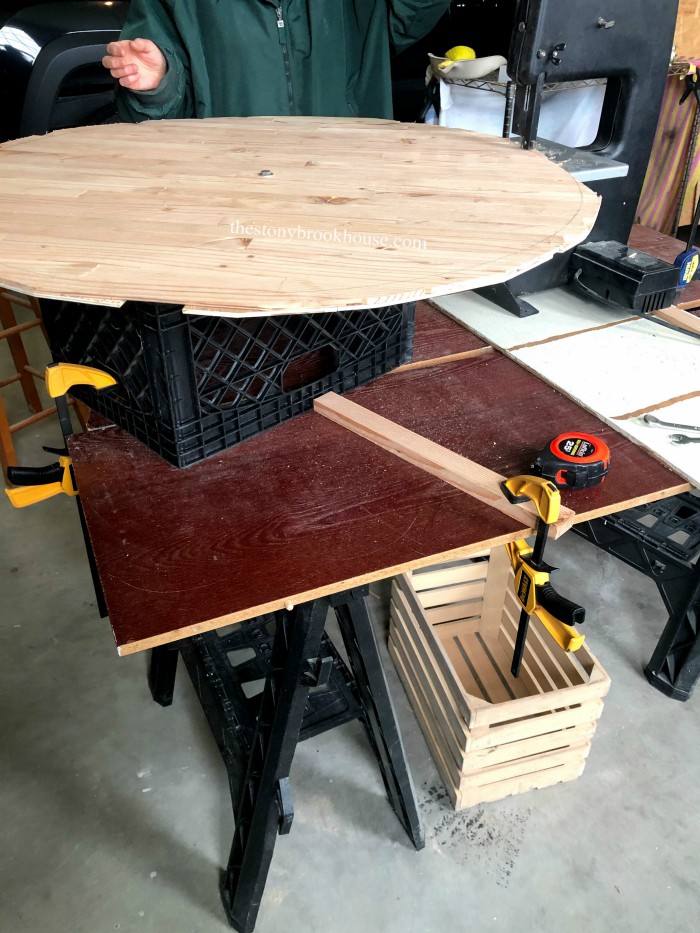





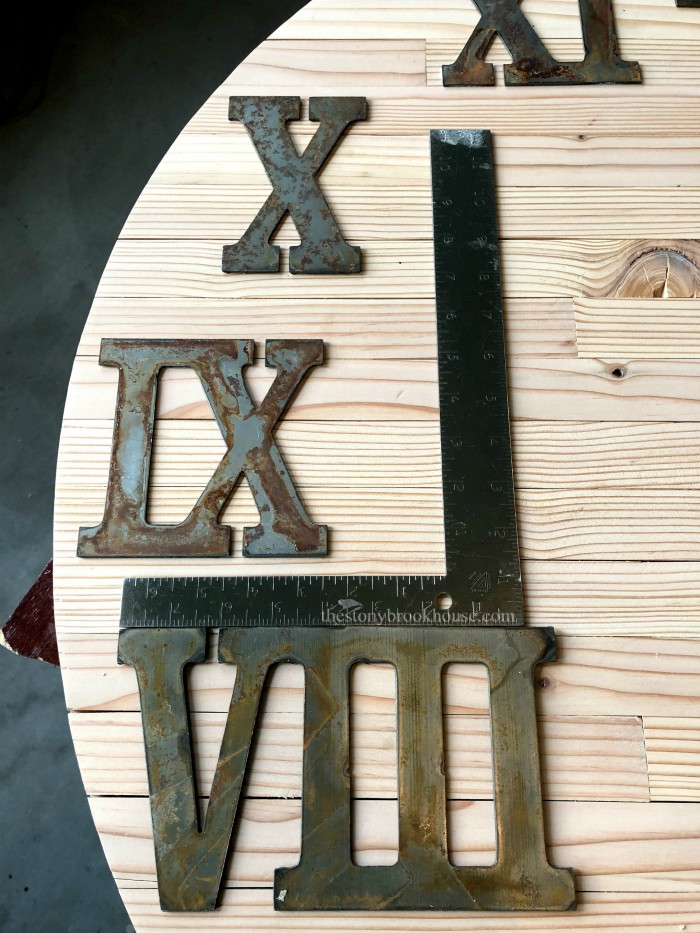
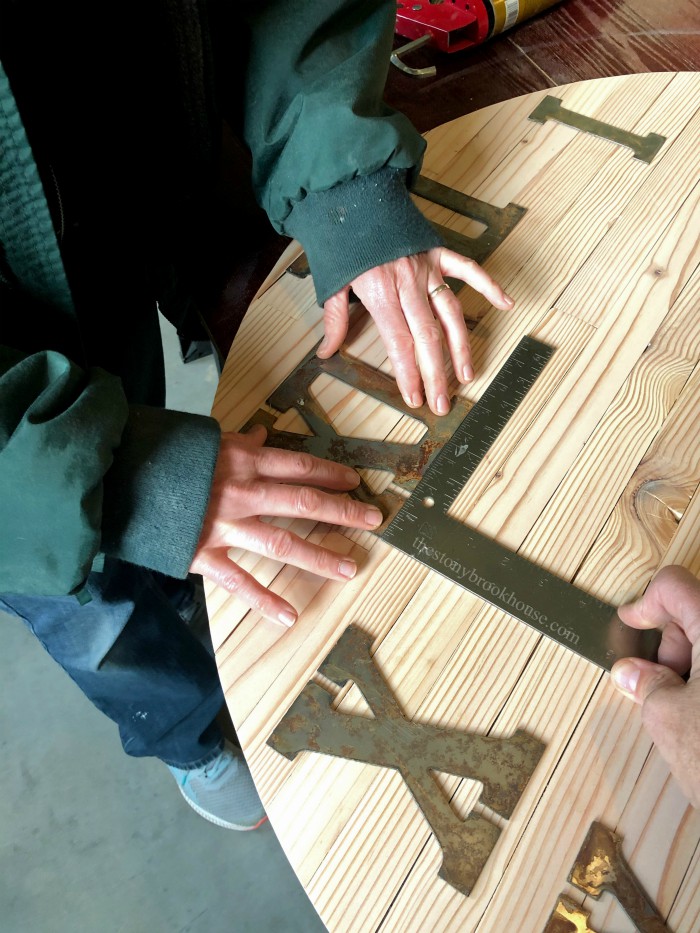
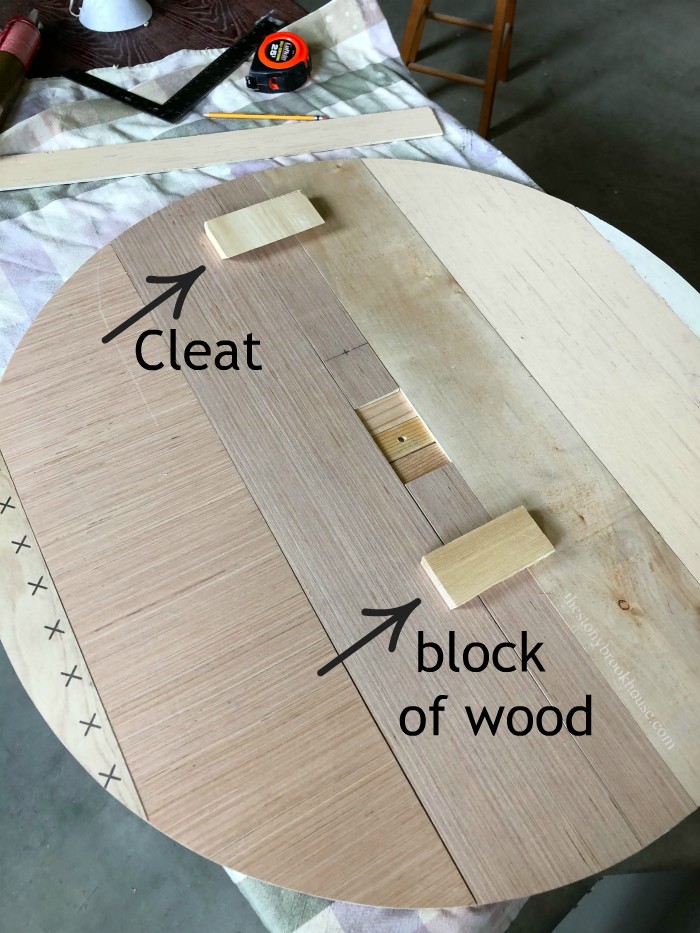
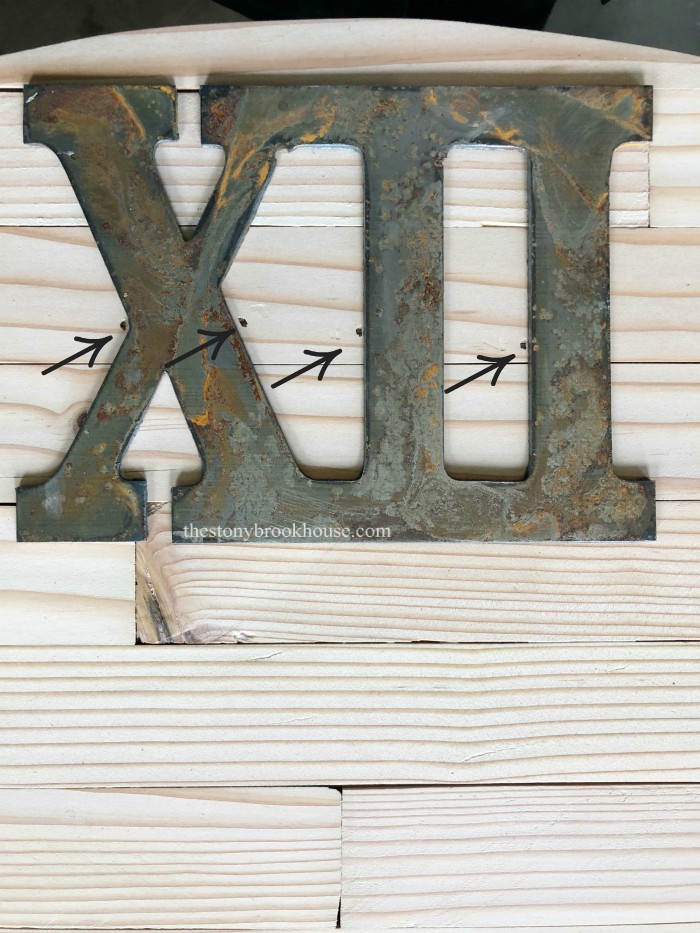

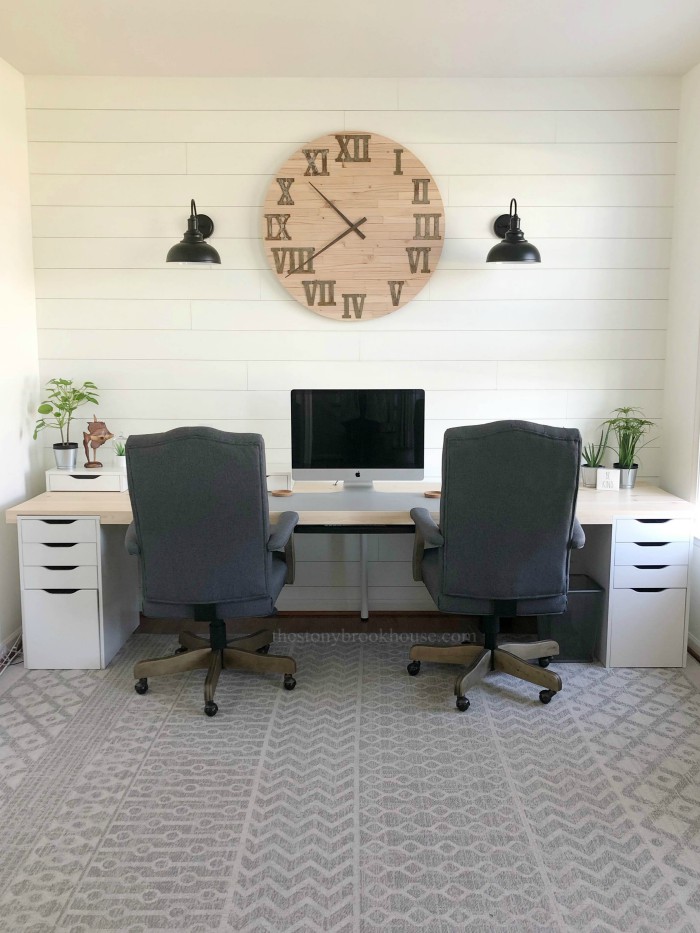
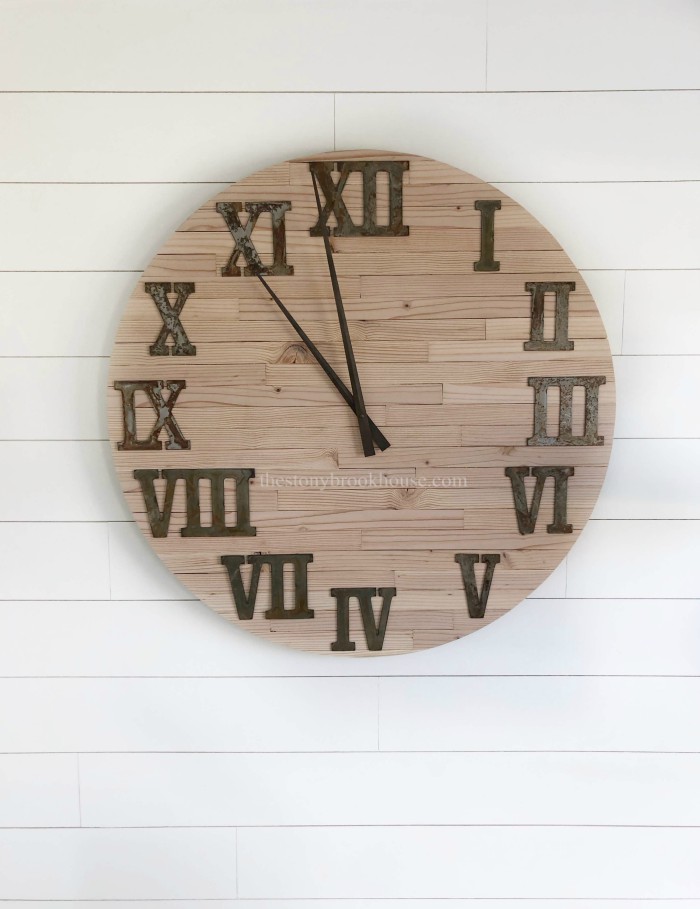
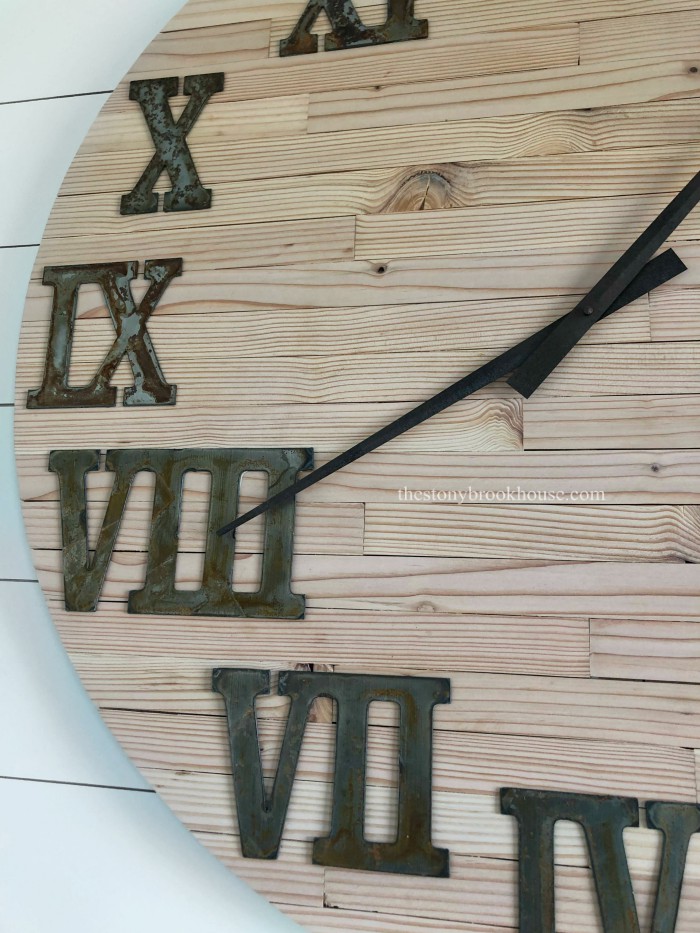


No comments
Post a Comment
Comments are awesome! Let me know what you think!